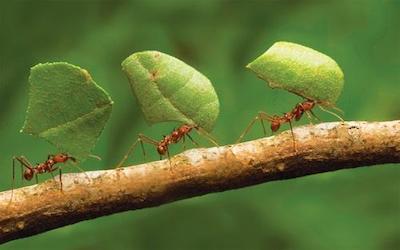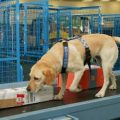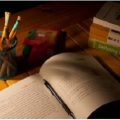PTE考生目前最大的问题之一就是练习题缺乏。除了有限的基本官方书(PLUS,Testbuilder, OG)之外就没有题了。很多英语基础不是很扎实的同学很难找到练习材料。悉尼文波雅思PTE培训学校专门为澳洲,尤其是悉尼、墨尔本的PTE考生准备了适合PTE听力阅读练习的科学60秒。各位PTE同学可以练习PTE听力中的summarise spoken text和PTE口语中的retell lecture,PTE听力口语-科学60秒-Frosty Moss练习记笔记技巧和复述。废话少说,下面开始:
听力内容:
60秒科学节目(SSS)是科学美国人网站的一套广播栏目,英文名称:Scientific American – 60 Second Science,节目内容以科学报道为主,节目仅一分钟的时间,主要对当今的科学技术新发展作以简明、通俗的介绍,对于科学的发展如何影响人们的生活环境、健康状况及科学技术,提供了大量简明易懂的阐释。
This is Scientific American — 60-Second Science. I’m Karen Hopkin.
Got a minute?
Next time you need directions, maybe ask an ant. Because these clever little critters are such masters of navigation that some can find their way home… whether they’re walking forward, backward, or sideways. That’s according to a study in the journal Current Biology.
Ants often travel long distances—well, for them—when they’re searching for food to bring back to their nests. And their built-in GPS appears to function just fine even when they wind up having to travel in reverse because they’re dragging a huge morsel. But how do these backward bugs know where they’re going?
To find out, researchers went to Spain to mess with some desert ants. They found an active nest and surrounded it with barriers that forced the foraging ants to follow a particular path back home. Once the ants were familiar with the maze, the researchers would scoop them up…hand them a cookie crumb…and then put them back in a different location…one that required taking a 90 degree turn to get to the nest.
What the researchers saw was that the ants that were carting a small, easy-to-carry crumb would dash forward with confidence and were able to hook a right and head on home. Presumably because they could see where they were going and recognized the route.
But some of their nest-mates were given a cookie crumb so large that they had to travel aft-first, pulling their prize behind them. These ants would set off in the correct general direction. But those that stuck with going in reverse would miss the turnoff to the nest.
Some of the rearward ants, however, stopped to get their bearings. They would drop the cookie and turn around to take a look at the landscape. This quick peek allowed the six-legged savants to reset their inner maps. So that after turning back around to grab their cookies they headed in the right direction, even going back-end first.
The ants-in-reverse appear to use celestial cues…like the position of the sun…to keep them on the straight and narrow. When the researchers used a mirror to make it look like the sun was on the other side of the sky, the beleaguered backward ants would turn tail for the opposite direction.
So ants integrate a lot of information…about local landmarks, the position of the sun, and where their bodies are situated in space…to successfully bring home the bacon… all while going backwards.
Lead author Antoine Wystrach, a CNRS researcher at the University of Toulouse 3, adds:
“This behavior is interesting in itself, as it implies a synergy between at least three types of memory: the long-term memories of the route sceneries, the memory of the new direction to follow, and the memory of the cookie left behind.”
Thanks for listening for Scientific American — 60-Second Science Science. I’m Karen Hopkin.
墨尔本悉尼文波PTE原创首发
更多精彩请持续关注微信wenbo_tv3。





